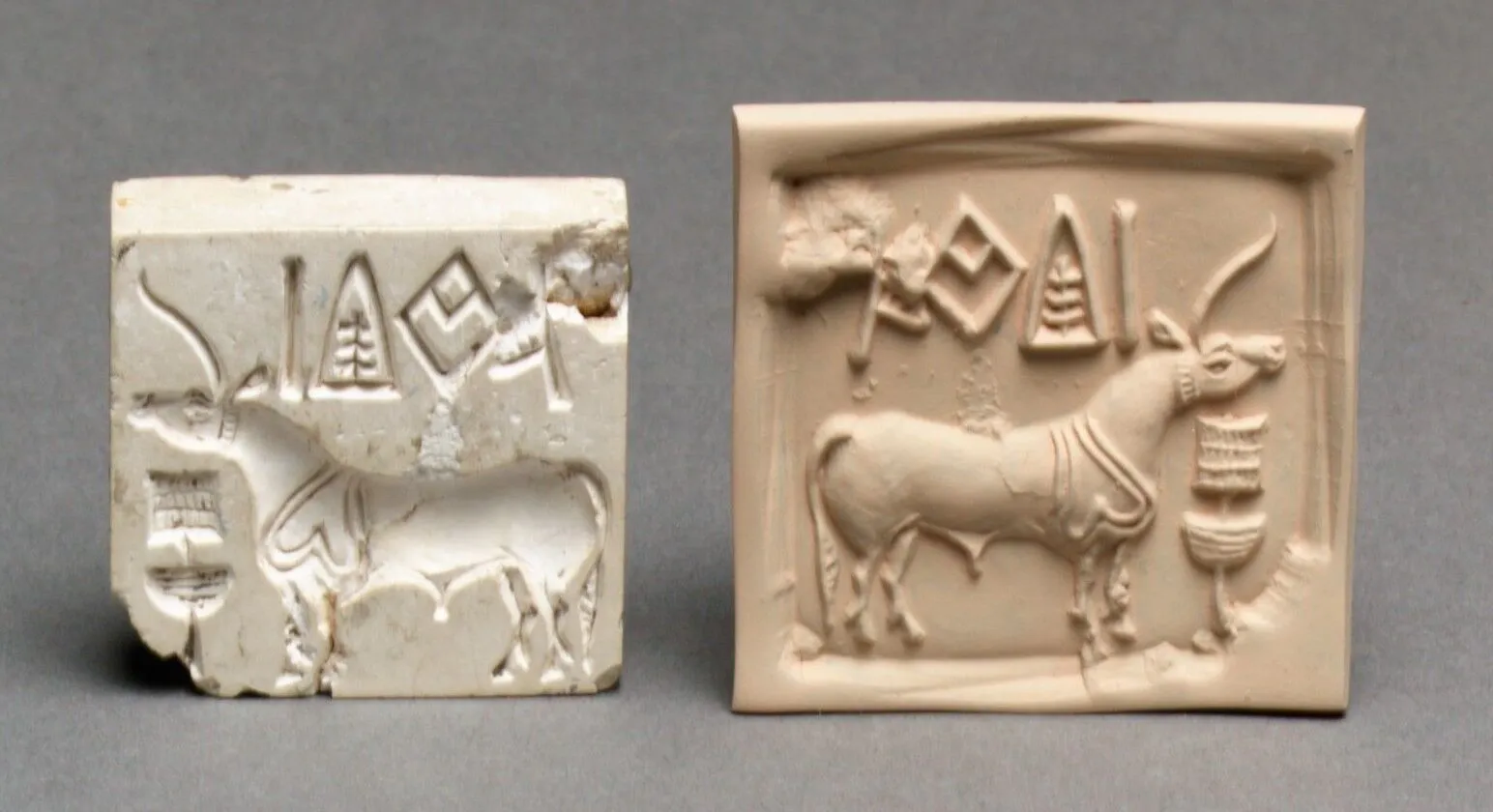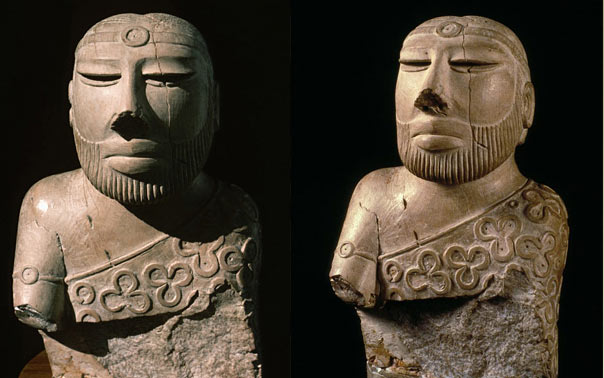The Indus Valley Civilization, one of the oldest and largest Bronze Age civilizations in the world, has long captivated the imagination of historians, archaeologists, and art enthusiasts alike. Amidst the wealth of artifacts and architectural marvels unearthed from this ancient culture, few objects have captured the public’s fascination as powerfully as the enigmatic Priest-King sculpture. This intricately carved steatite figure, dating back over 4,000 years, stands as a testament to the remarkable artistic and technical prowess of the Indus Valley people.
In this comprehensive blog post, we will delve into the mysteries surrounding the Priest-King, exploring its possible significance, the insights it provides into the civilization’s social and religious structures, and the ongoing scholarly debates surrounding its interpretation. Through a detailed examination of this captivating artifact, we will uncover the rich tapestry of the Indus Valley Civilization and the enduring legacy it has left for us to explore.
The Discovery and Description of the Priest-King Sculpture
The Priest-King sculpture was discovered during excavations conducted at the site of Mohenjo-daro, one of the most prominent and well-planned cities of the Indus Valley Civilization, located in present-day Sindh province of Pakistan. In 1925-26, the archaeologist Kashinath Narayan Dikshit, working under the auspices of the Archaeological Survey of India, unearthed this remarkable artifact from the ruins of the ancient city.

The sculpture, standing at just 17.5 cm in height, is carved from white, low-fired steatite, a type of soft stone that was extensively used by the Indus Valley inhabitants for a variety of objects, from seals and beads to tablets and statues. The figure is depicted with a serene, almost contemplative expression, with half-closed eyes, curved ears, a neatly trimmed beard, and thick, sensuous lips. The figure’s garment is draped over the left shoulder and tucked under the now-broken right arm, its surface adorned with intricate trefoil motifs and circular patterns carved in shallow relief.
The figure’s hair is parted in the middle and held together by a diadem set with a circular ornament, which also adorns the right upper arm. Traces of red pigment found on the garment’s design suggest that the sculpture may have been originally colored with dye and embellished with other materials, such as shell inlay, which was discovered in one of the figure’s eyes.
The unpolished, incised lines of the beard extending into the cheek area indicate that the sculpture may have remained unfinished, offering a tantalizing glimpse into the artistic process of the Indus Valley craftspeople.
Interpreting the Priest-King: Theories and Debates
The Priest-King sculpture has been the subject of much scholarly debate and speculation since its discovery. Attempts to establish the figure’s identity and status have led to a range of interpretations, each offering a unique perspective on the significance of this captivating artifact.

The “Priest-King” Hypothesis
One of the most widely accepted theories is the “priest-king” hypothesis, first proposed by archaeologist John Marshall and later reinforced by Mortimer Wheeler. This theory suggests that the figure represents a high-ranking individual who held both religious and political authority within the Indus Valley Civilization.
The similarities between the Priest-King’s garment and the attire depicted on the famous Pashupati Seal, which is thought to represent a prototype of the Hindu deity Shiva, have led some scholars to believe that the figure may have been a representation of a deity or a high-ranking religious leader. The half-open eyes and the possible headdress attachment have also been interpreted as evidence of the figure’s engagement in yogic meditation or other spiritual practices.

The “Foreigner” Theory
However, not all scholars are convinced by the “priest-king” hypothesis. Some have argued that the physiognomic features of the Priest-King, such as the treatment of the beard, suggest that the figure may have depicted a foreigner. This theory is bolstered by the observation that the garment covering only the left shoulder is a style commonly seen in art from the Mesopotamian Civilization, which had trade links with the Indus Valley.
Additionally, the trefoil motifs on the figure’s garment have been compared to the cloud motif found in the ajrakh block-printed fabrics, which were being produced for export during the Indus Valley period. This has led some researchers to speculate that the Priest-King may have been a representation of a foreign trader or diplomat who had established ties with the Indus Valley people.

The “Abstract Concept” Interpretation
While the “priest-king” and “foreigner” theories have gained traction, some scholars argue that the Priest-King may not represent a specific historical figure or deity at all. Instead, they suggest that the sculpture could be a symbolic representation of an abstract concept or idea that was important to the Indus Valley Civilization, such as authority, spirituality, or the idealized human form.
This interpretation is based on the observation that the Indus Valley Civilization lacked a clear system of written language, making it difficult to ascertain the precise meaning and significance of their artistic representations. In the absence of textual sources, the Priest-King may have been a visual embodiment of a broader cultural or philosophical idea that is not easily translatable to our modern understanding.
The Significance of the Priest-King Sculpture
Regardless of the ongoing debates surrounding its interpretation, the Priest-King sculpture remains a captivating and invaluable artifact that offers us a glimpse into the rich cultural and artistic heritage of the Indus Valley Civilization. Its exceptional craftsmanship, attention to detail, and the technical sophistication of its production serve as a testament to the advanced skills and aesthetic sensibilities of the Indus Valley artisans.

Beyond its artistic merit, the Priest-King sculpture also provides important insights into the social and religious structures of the Indus Valley Civilization. The possible association with a high-ranking religious or political figure, as well as the potential connections to Mesopotamian and later South Asian art, suggest the existence of complex societal hierarchies, trade networks, and cultural exchanges within this ancient civilization.
Moreover, the Priest-King’s journey from its discovery in Mohenjo-daro to its current home in the National Museum of Karachi is a testament to the ongoing efforts to preserve and study the rich cultural heritage of the Indus Valley. The repatriation of the sculpture to Pakistan in 1972, as per the Shimla Agreement, is a significant milestone in the recognition and ownership of this important artifact by the country where the Indus Valley Civilization flourished.
Conclusion: Unlocking the Mysteries of the Indus Valley
The Priest-King sculpture, with its enigmatic presence and the ongoing scholarly debates surrounding its interpretation, serves as a powerful reminder of the enduring mysteries and complexities of the Indus Valley Civilization. As we continue to uncover and study the material remains of this ancient culture, we are faced with the challenge of piecing together a comprehensive understanding of their social, religious, and cultural practices.

The Priest-King, like many other artifacts from the Indus Valley, invites us to engage in a process of active inquiry and interpretation, drawing upon the latest archaeological findings, historical analyses, and interdisciplinary perspectives. By delving deeper into the stories and meanings behind these captivating objects, we can gain a richer appreciation for the ingenuity, artistry, and sophistication of the Indus Valley people, and uncover the profound lessons they have left for us to discover.
As we explore the Priest-King and other Indus Valley artifacts, we are reminded of the importance of preserving and sharing the cultural heritage of this ancient civilization. Through continued research, public engagement, and collaborative efforts between scholars, institutions, and local communities, we can unlock the secrets of the Indus Valley and ensure that its remarkable legacy endures for generations to come.

